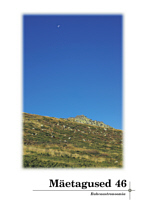Plejaadid kui taevaavad, Linnutee ja neiu Kuul: kultuuriseosed Põhja-Euraasias
The Pleiades as Openings, The Milky Way as the Path of Birds, and the Girl on the Moon: Cultural Links Across Northern Eurasia
Author(s): Yuri E. BerezkinSubject(s): Customs / Folklore
Published by: Eesti Kirjandusmuuseum
Keywords: Asian-American cosmonymic links; folk astronomy; lunar spots; prehistory of Northern Eurasia; the Milky Way; the Pleiades
Summary/Abstract: The Baltic-Finnish and the Baltic (Latvian and Lithuanian) cosmonyms mostly coincide while the Baltic and Slavic cosmonymic patterns are different. The Pleiades in the Eastern Baltic are “a sieve”, the Milky Way is “the path of migratory birds” and a girl holding water pails is seen on the Moon. Across most of Central, Western and Southern Europe the Pleiades are “a hen with its chicken”, the Milky Way and the lunar spots have other (and different) interpretations. The Eastern Baltic pattern is identical with the Middle Volga one where it is widespread among both Finnish-Permian and Turkic groups and probably relates back to the (Proto-Baltic?) culture of the Iron Age. However, parallels for the cosmonyms in question are found across most of Northern Eurasia and find corresponding similarities in some parts of North America. “Water-carrier on the Moon” is the most widespread of these motifs being known in Japan and Polynesia. In Eurasia, the Northern Samoyeds noticeably lack all three images. The initial emergence of at least some of the cosmonyms under discussion in the Terminal Pleistocene of northern East Asia and their further dissemination towards the West, down to the Baltics, is a hypothesis to be checked.
Journal: Mäetagused. Hüperajakiri
- Issue Year: 2010
- Issue No: 46
- Page Range: 7-36
- Page Count: 30
- Language: Estonian

